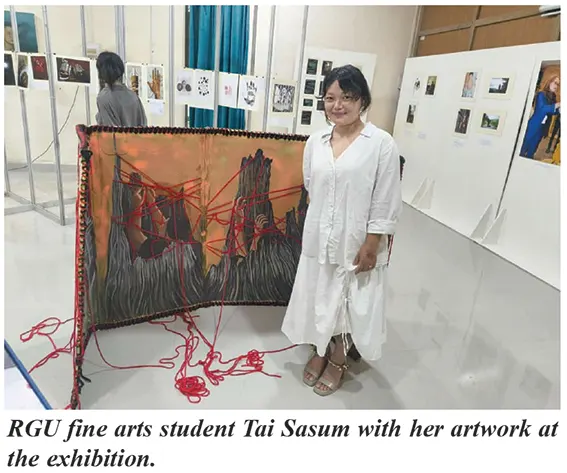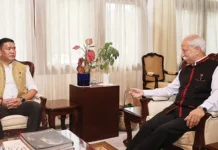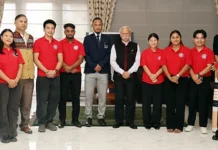Staff Reporter
ITANAGAR, 30 Jun: The first-ever exhibition by the queer community of Arunachal Pradesh was organised at the Science Centre here.
Themed ‘Soliloquy’, the two-day event concluded on Sunday, with hundreds of visitors attending it.
The exhibition featured an array of artworks, photographs and interactive pieces that highlighted the rich and diverse stories of the queer community.
Most of the artworks, in the form of photography, poems and paintings, were from the United States, the United Kingdom, and parts of the Northeast, including Arunachal Pradesh, informed Sawang Wangchha, the founding member of AP QueerStation.
“The main objective of AP QueerStation has always been to bring queer visibility and bridge the gap between society and the community. I believe exhibitions like this one can achieve that through art and literature, and the ‘Soliloquy’ exhibition was the perfect tool for us to do that,” he said.
“We are thankful to everyone who attended the event and listened to our stories. A big thank you to the science and technology department of Arunachal Pradesh for providing us with a safe space,” he added.
Wangchha informed that the exhibition was aimed at “fostering understanding, acceptance and pride by showcasing the unique voices and experiences within the community.”
Most of the photographs were works of Brooklyn (USA)-based photographer Marc Ohrem-Leclef, who also works “in response to socio-political histories that veil inequalities,” the organisers said.
Tai Sasum, a fine arts student at Rajiv Gandhi University, who displayed an artwork depicting a woman tangled in red woolen thread, said that she created the piece long back, when she was going through mental health issues.
“The red colour signifies a woman wearing a red dress whose feet are trapped with a wooden lock (called lapya in Nyishi). The woolen thread signifies the entangled thought process that a woman has in her mind,” Sasum said.
More than 300 people, including artists, professors from RGU, and others visited the exhibition.
Curator and researcher Romik Sai said: “Through the ‘Soliloquy’ exhibition, we wanted to create more dialogue about queerness within the community, as well as beyond.
“Our main focus was to bring in aspects of intersectionality and marginality of queer individuals, primarily of the Northeast region of India. Our curation, however, was not limited to just the narratives of NE India, but we received submissions from beyond India, as well,” Sai said.
Mariwala Health Initiative, Chinky Homo Project, and Queer Objects were the partners of the event.



